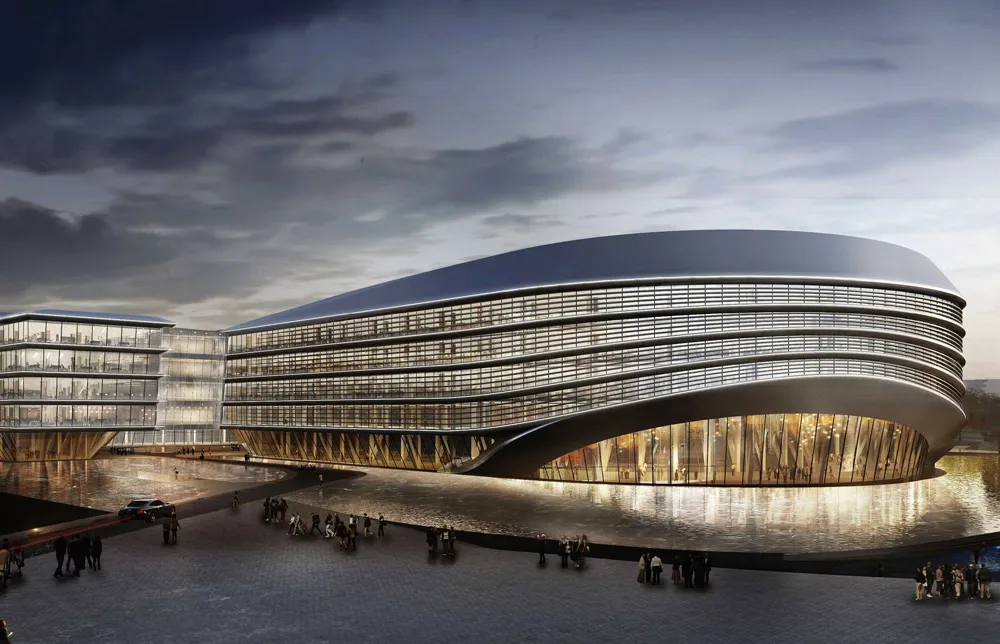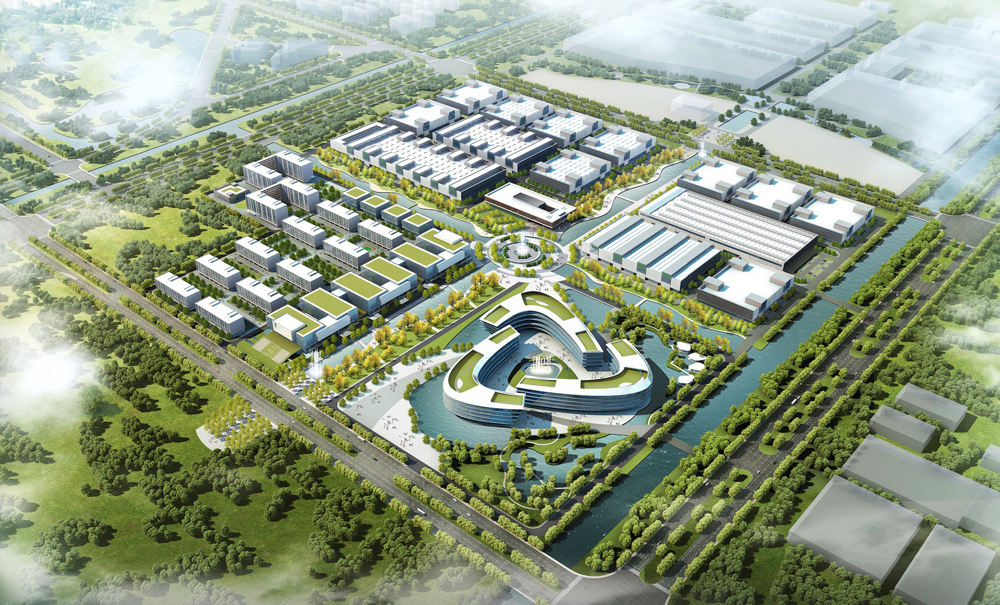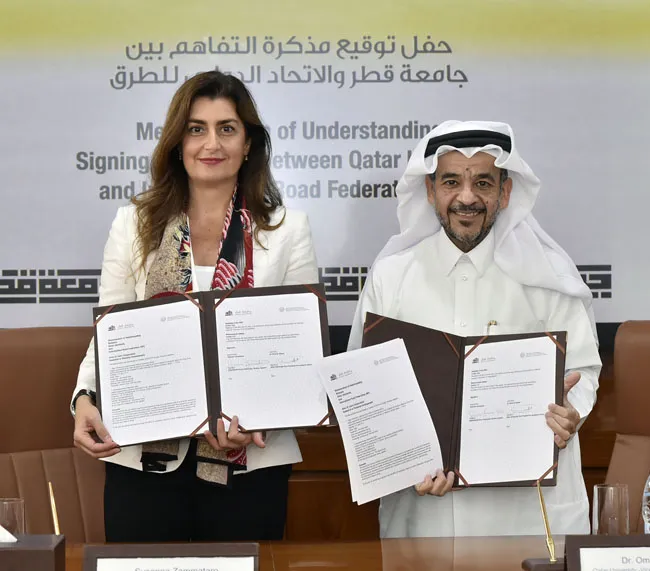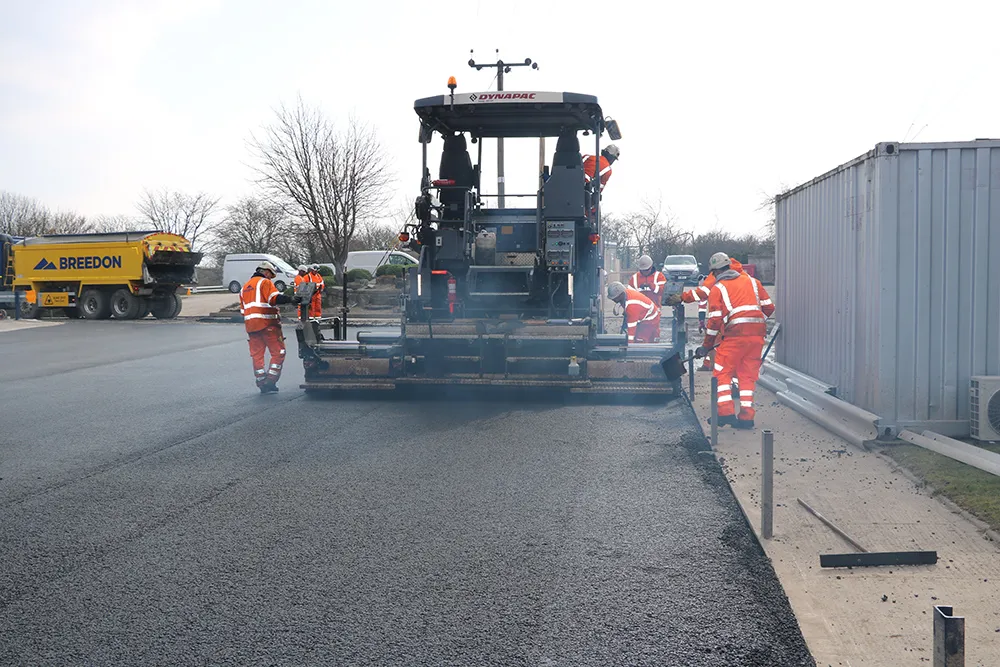
Designed by world-famous architect Colin Franzen, the campus will cover a total area of 1.1 million sq ft. It will feature administration, laboratory and new R&D functions and accommodate more than 5,000 employees.
“Creatively, the single main building (centre of image) is naturally divided into three functional areas by its shape, which resembles the logo of the company…and we blur the boundary between workspace and landscape, which I believe is the most cutting-edge and imaginative architectural design for construction machinery companies in China,” said Franzen.

The landmark building will become a ‘nest’ for SANY’s future intellectual and advanced machinery prototypes. The R&D centre will integrate exploring, prototyping, testing, and showcasing SANY’s next-generation excavators.
As one of the company’s most important projects currently under construction, SANY says the Global Construction Machinery R&D Center will strengthen its corporate competitiveness by developing state-of-the-art technologies for construction and earthmoving machinery.
According to the project’s leader, Zhang Weifeng, the facility is expected to be completed by September 2021, creating a workspace that offers an “unprecedented and thrilling” experience.









